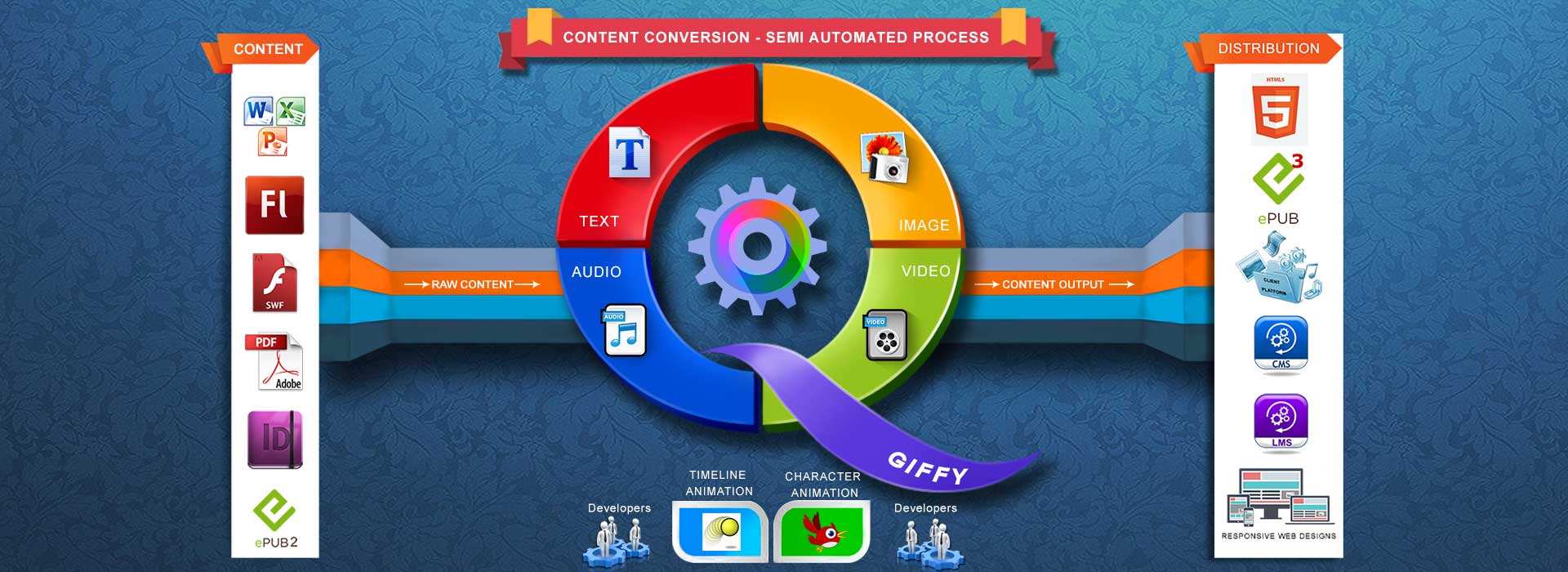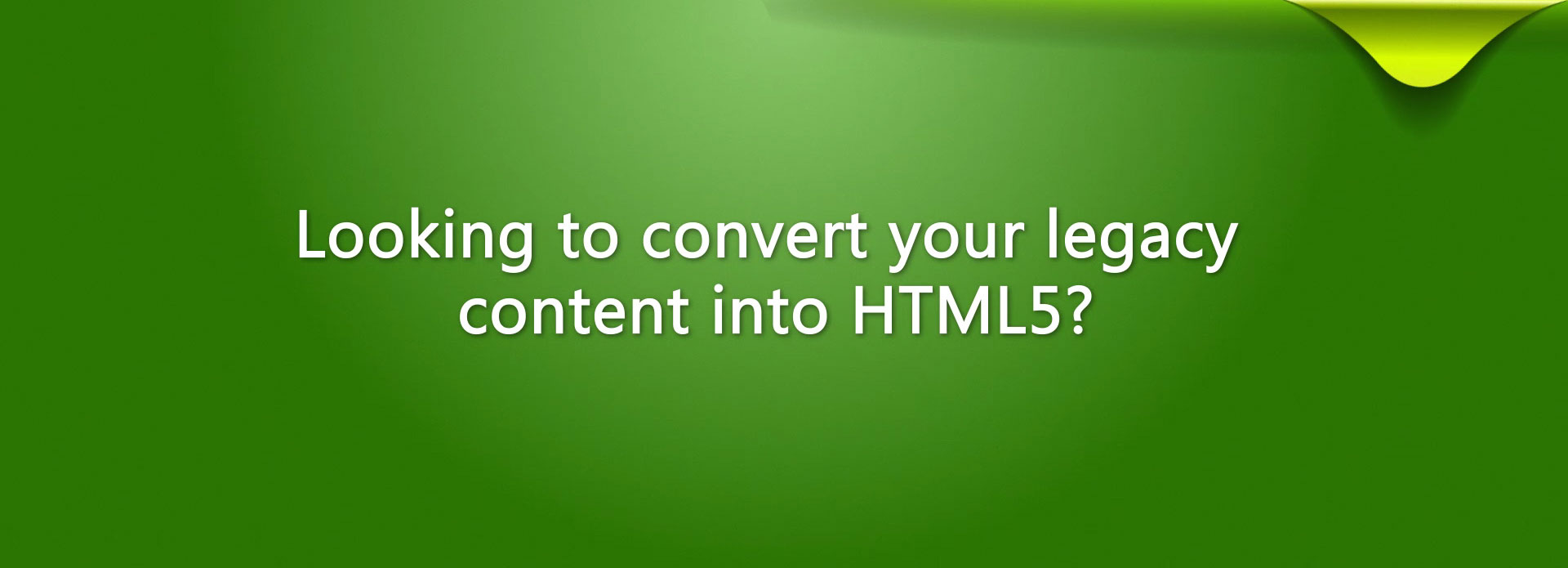Workflow for Basic HTML5 conversions
We accept any type of input format like Word, Excel, PowerPoint, Flash, swf, editable or non-editable pdf, InDesign, ePub2 etc. for HTML5 conversion. The conversion of these into HTML5 format may not always be straight forward. The type and nature of the content, complexity like use of tables, multi column styled content, math and scientific formulae, media elements used, volume, etc. determine the workflow and conversion activities involved.
We follow a detailed process where the content and media are extracted, categorized, stored. A thorough analysis is carried out which results in identification of an optimum workflow and use of existing tools or sometimes even creation of new tools/ macros/ plugins/ APIs, etc. We have a highly skilled engineering team to do this.
Based on our analysis of the input content, we propose/ follow one of the following processes:
- Fully Automated
- Semi Automated
- Using Authoring platforms

Fully Automated Process
Automated process involves use of our proprietary HTML5 engine which converts the legacy format content into the desirable HTML5 content automatically. This gives good results if the input is simple which means editable, follow simple styles and doesn’t use media elements other than images.

Semi Automated Process
The Semi automated process involves manual steps as well as use of our proprietary tools for conversion. The manual steps could be either before or after the use of tools which depends on the type of content.

Some of our customers want to enhance the richness of content in terms of user experience and interactivity as part of the conversion process. In these scenarios, we use either our own proprietary authoring platform or third party IDEs. This could also be considered as new content creation.
Flowing Legacy Content to Specific Platforms:
Some of our customers may need to repurpose their legacy content through popular authoring tools based on their business requirements. We constantly evaluate the best tools in the market which are relevant to the different types of services that we offer. This gets our team well equipped with the latest tools and technologies and ready to hit the road when opportunities are presented.
The following are some of the popular authoring IDEs which we are familiar with.
- Lectora Online
- Lectora Publisher
- Lectora Inspire
- Habitat
- mAuthor
- mCourser
- mInstructor
- Captivate
- Presenter
- Robohelp
- Articulate Storyline
- Edge Animate
- Camtasia Studio
A workflow diagram that explains the high level process that we follow for the HTML5 conversion services is given below.

We have UX engineers and template engineers who are capable of writing custom CSS, JavaScript and jQuery code to fulfill the design and functionality requirements of our customers. Page templates, library components, style sheets, etc. are created in the prescribed authoring environments (to the extent it supports customization) before any mass conversion is carried out.


